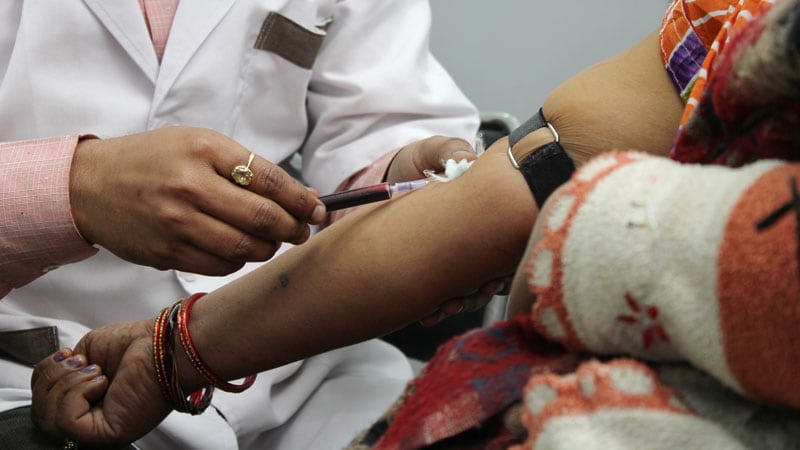TOPLINE:
Researchers have identified specific circulating microRNAs (miRNAs) in blood samples that can identify individuals at high risk of developing pancreatic cancer within 5 years, potentially improving early detection and outcomes.
METHODOLOGY:
- Early detection of pancreatic cancer could improve patient prognosis, but clinically viable biomarkers are lacking. In a two-stage study, researchers screened and validated circulating miRNAsas biomarkers for early detection using prediagnostic plasma samples from 462 case-control pairs across multiple cohorts.
- The discovery stage included 185 pairs from the PLCO Cancer Screening Trial, and the replication stage included 277 pairs from Shanghai Women’s/Men’s Health Study, Southern Community Cohort Study, and Multiethnic Cohort Study.
- Overall, 798 plasma microRNAs were measured using the NanoString nCounter Analysis System, and odds ratios (ORs) for pancreatic cancer risk were calculated on the basis of miRNA concentrations.
- Statistical analysis involved conditional logistic regression, stratified by age and time from sample collection to diagnosis.
TAKEAWAY:
- In the discovery stage, the researchers identified 120 miRNAs significantly associated with pancreatic cancer risk.
- Three of these miRNAs showed consistent significant associations in the replication stage. Specifically, hsa-miR-199a-3p/hsa-miR-199b-3p and hsa-miR-191-5p were associated with a 10%-11% lower risk for pancreatic cancer (OR, 0.89 and 0.90, respectively), and hsa-miR-767-5p was associated with an 8% higher risk for pancreatic cancer (OR, 1.08) within 5 years of the blood draw.
- In age-stratified analyses, hsa-miR-767-5p (OR, 1.23) along with four other miRNAs — hsa-miR-640 (OR, 1.33), hsa-miR-874-5p (OR, 1.25), hsa-miR-1299 (OR, 1.28), and hsa-miR-449b-5p (OR, 1.22) — were associated with an increased risk for pancreatic cancer among patients diagnosed at age 65 or older.
- One miRNA, hsa-miR-22-3p (OR, 0.76), was associated with a lower risk for pancreatic cancer in this older age group.
IN PRACTICE:
The findings provide evidence that miRNAs “have a potential utilization in clinical practice” to help “identify high-risk individuals who could subsequently undergo a more definitive but invasive diagnostic procedure,” the authors said. “Such a multistep strategy for pancreatic cancer screening and early detection, likely cost-efficient and low-risk, could be critical to improve survival.”
SOURCE:
The study, with first author Cong Wang, Vanderbilt University Medical Center, Nashville, Tennessee, was published online in the International Journal of Cancer.
LIMITATIONS:
The researchers lacked miRNA profiles of patients with pancreatic cancer at diagnosis and were not able to track the miRNA changes among pancreatic cancer cases at the time of clinical diagnosis. Sample collection protocols differed across study cohorts, and the researchers changed assay panels during the study.
DISCLOSURES:
The research was funded by grants from the National Cancer Institute. The authors declared no conflicts of interest.
